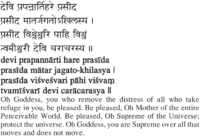Inventory Clearance Sale – 40% off while supplies last
From Birth to Death contains the mantras, instructions, applications, and philosophy for all the rites of passage in the Hindu dharma including the Vedic Wedding Ceremony and the funeral rites performed at the end of life. The last half of the book is a questions and answers section compiled from the online classes that took place in 2010.
An invaluable resource for anyone interested in learning to live a dharmic and meaningful life in accordance with Vedic wisdom.








